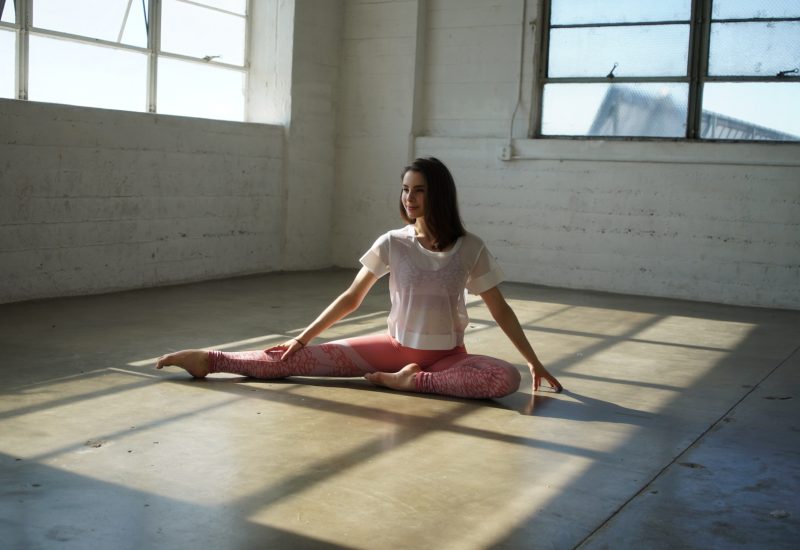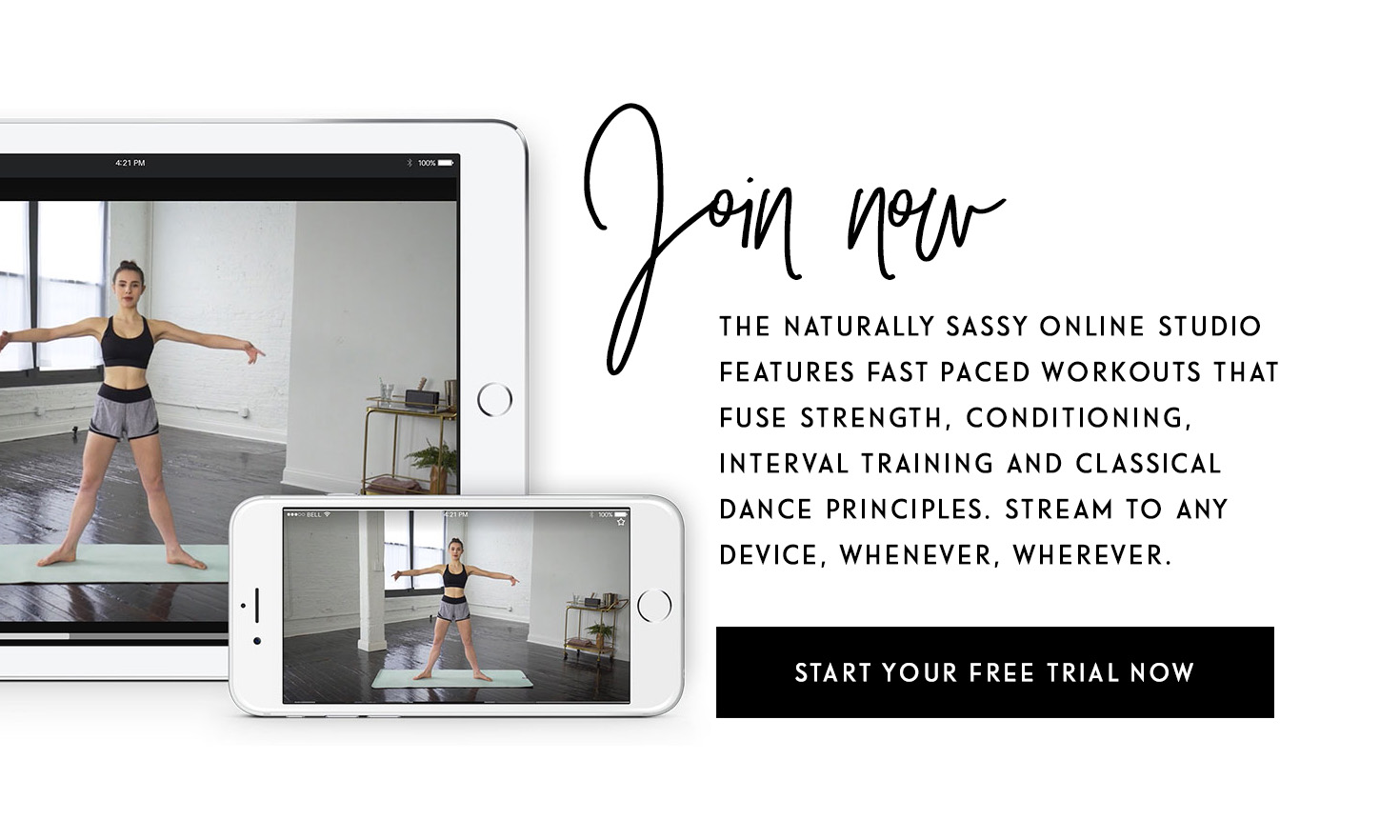If you have followed the journey of my blog you’ll know before working on Naturally Sassy full-time I was training professionally as a Ballet Dancer. From the age of three my ballet shoes were my most important possessions and as I grew up the career became my sole focus. At the age of 13 exhausted after a long 8 hour day training, low on energy, having eaten very little food (but that’s a whole other story!) I went over my ankle in a rehearsal, tearing the ligament. This injury plagued my dancing for the next 6 years and eventually drove me to stop. I lived in a viscous cycle of injury and rehabilitation, dancing for short periods of time before weeks spent at the physio. The complication here was not only figuring out how to help it, but also how to keep fitness and shape when I couldn’t bear much or any weight on the ankle. Aesthetic is a huge part of ballet, and with a yo-yo fitness regime from dancing 8 hours a day to 0 my body was in a constant state of confusion. Whilst I’m sure not many of you are in full-time athletic training, I am positive some of you have been injured for long periods of time with the inability to exercise and workout as your used to. Through 6 years of an intensified injury experience, I found my groove with keeping fit both mentally and physically whilst injured, and thought I’d share these tips with you today!
Mentally:
Accepting Where Your At
The best thing you can do to keep sane during an injury is to accept it. I always felt like I wanted to rush each step of the rehab process to feel like myself again, but you shouldn’t sweat what you can’t change, as it only tends to builds anxiety.
Setting Goals
To help yourself with the point above it’s important to set goals within your rehabilitation in or order to keep focussed, and know where your at in the process. It’s very easy to feel lost within your injury as it does often feel out of your hands, but keeping a mental note of the steps to recovery helps to stay motivated.
Creating a new routine
Often our exercise and gym life is a routine, and so not only do we suddenly feel like our fitness is going but a part of our lives. For me exercise is also my way of de-stressing after a long day, and without it my mood entirely changes. The most important thing is to recognise this and create a new routine in it’s place. When I was off injured from ballet I replaced this routine with two things; Meditation, I started using the headspace app and Movement workshops, I started going to workshops and lectures on a weekly basis that were run by a few London physiotherapists. This expanded my mind on my injury, which distracted me in part from the injury itself! Try and replace the daily workout with a metal workout, expanding your knowledge or starting something new – like a blog! Without my injury, Naturally Sassy would never have been born.
Workout a better sleep routine
Your body uses sleep to heal and repair, so getting 8 good, solid hours is one of the best things you can do for your body. You should have extra time in your day without training, so have an earlier dinner and amp up your sleep schedule.
Physically:
See a professional
The first thing to say is that you must see a physiotherapist or doctor (dependant on your injury) before you set yourself any sort of rehabilitation program. It almost goes without saying, but this is one of the biggest reasons injuries linger. Your the best person there is to know how your body feels, but a professional in the field is the best person to know how it will feel better. Once you’ve found the right physiotherapist for you (shop around until your confident) and had your injury properly assessed, make sure you ask your physiotherapist for a recovery plan. They should know how they plan on treating your problem, and asking shouldn’t be a problem. This will give you a clear Idea of what you are and are not allowed to do. For example if you have a knee injury it may not be ok to run, but doing basic strengthening exercises, and bending at the knee may be fine.
Finding exercises you can do
This leads to me to the point of finding what you can do. Normally there is always something, or in fact many things! When I was off with an ankle injury, I was blasting my glutes, abdominals and arms on a daily basis, all of which were based in non-body weight exercises. If your not too versed with different exercises, I’d implore you to book at least two sessions with a Personal Trainer or Pilates instructor who can set you a program to do from home. More often than not, your physiotherapist can suggest someone they can work with, and there can be a fluid conversation between all members of your ’team’.
Remember the simple things
There are some extremely simple toning exercises you can do with hardly any movement or load. For example, just actively holding in your abs for all hours of the day. You don’t need to be cramping them, but just gently engaging the muscle. You can also try a simple bum toner by sitting on the edge of a chair and tensing the glutes and releasing them with the core engaged. This is an exercise I still often do when I’m bored on the train, it may look a little silly bobbing up and down, but it’s just about subtle enough!
Back to basics
Basic fitness like walking, may not be a problem to your injury. If you’re able, make the most of this time and walk everywhere! Explore the parks around where you live, or just change up your commute. It might not be a HIIT session, but it’s still exercise and does give you those feel good endorphins, and some fresh air.
Food Portions
One very common food change I see amongst friends when they have reduced their exercise, is a drastic reduction in food consumption. Of course you won’t need to eat as much if you’re expending less energy, but you still need to be properly nourishing your body and in the long run an extreme calorie deficit will not help you keep ‘in shape’. There’s a fine line, and it’s always best to see a nutritionist if your concerned about keeping physical shape during an injury; they can consult you on the best changes, and you’d be surprised by how minimal these are. With food portions and controlling food intake it’s important not to only think short-term but long term, you don’t want to lower your metabolism or stunt your bodies proper recovery for the goal of keeping toned. It’s absolutely possible to eat well and stay in good form.
So whilst you may not be able to workout in the same way, you can see there are plenty of things you can do to keep motivated and in tip-top mental shape, whilst keeping reasonably fit and positive!







